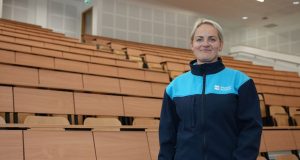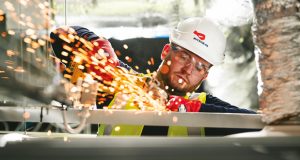Giles Korner, Head of Smart Buildings at engineering consultancy HDR | Hurley Palmer Flatt, explains how the latest technologies can improve environmental conditions for building occupants
The design of buildings is becoming more focused on the wellbeing of occupants, creating comfortable and secure working environments. With this change of emphasis and the adoption of smart building technologies, building and facilities teams are able to adapt their processes to allow them to become more proactive, driving efficiency in the management and control of the building.
Historically we have designed buildings based on standard metrics such as size, purpose, fire regulations and so on. However, organisations are now focusing their attention on costs and benefits. JLL has created a rule adopted by the real estate industry for measuring costs: 3:30:300. This represents proportionate unit costs for energy (3), property (30), and people (300). It’s no surprise that people have become a high priority when designing a new or refurbished working environment.
This is reflected in terms such as people- or human-centric design, aimed at enhancing the user experience. Organisations are now focusing on the wellbeing of their people and how they can create working environments that support health and wellness.
The digitisation of building systems has enabled the industry to integrate historically disparate systems via a common communications platform that enables building and facilities managers to measure and monitor the working environment in real time. These smart building technologies allow for a more responsive service that improves conditions for occupants.
For example, many people have found themselves sitting in an open-plan workplace which is too cold for comfort, or spent time in an overheated meeting room trying to fend off drowsiness. Yet complaints to the facilities manager have been met with the response that the temperature is centrally controlled and cannot be changed. The chilly employee has to put on warmer clothing or find somewhere else to work, while meetings in the overheated room are likely to be unproductive. In either case, the result is dissatisfied people unable to perform at their best, which is bad for the business.
CARBON DIOXIDE
Another issue is carbon dioxide and the way it can impact on people’s cognitive performance. Guidelines suggest that CO2 levels should not exceed 1000 ppm. However, some individuals are sensitive to CO2 concentrations as low as 600 ppm, so action may be warranted at lower levels. Certainly above 1000 ppm, most of us will feel drowsy.
Studies show that higher levels of carbon dioxide cause brain metabolism and neural activity to plummet (see References, note 1). Research by Harvard, State University of New York and Syracuse University (2) reveals that when people breathe in too much carbon dioxide at their desks their performance suffers.
With real-time monitoring, FMs are able to spot areas where temperature, humidity or CO2 concentration have exceeded acceptable levels and make adjustments in real time. The introduction of smart apps allows control of some aspects of the working environment to be passed to the individual.
In this way the adoption of smart building technologies can drive efficiencies, enable more proactive control of M&E processes by FMs, and deliver an enriched user experience conducive to increased happiness and productivity.
SMART HOTELS
Matthew Voaden leads the leisure and entertainment division of HDR | Hurley Palmer Flatt. He discusses the use of smart technology in hotels seeking to improve space efficiency and the guest experience.
“There is a growing trend within the hotel industry to utilise the front of house areas to expand their offering beyond the more traditional services. As part of this innovation the hotel doors are being opened to the general public, offering a range of food and beverage services, luxury shops and multifunction spaces within the more traditional quiet and underutilised public lobby areas.
In achieving such a diverse use, especially in large open-plan areas, there are many new challenges for the design team to consider. In designing systems with multiple uses, smart technology is now being implemented to monitor and maintain the correct lighting, audio and CO2 levels to improve the environment and enhance the overall guest experience.
With the potential for many operators to embrace smart technology, there is the opportunity to go one step further and personalise the surrounding environment to the hotel guest. In the ‘on demand’ world the hotel guestroom could be personalised upon check-in to the guest’s favourite music and entertainment channels, lighting levels and colours adjusted accordingly, the coffee machine turned on and much more, to take the experience beyond the one room fits all of today.
To achieve this, the way in which the building services systems are designed, controlled and operated becomes more important than ever.”




